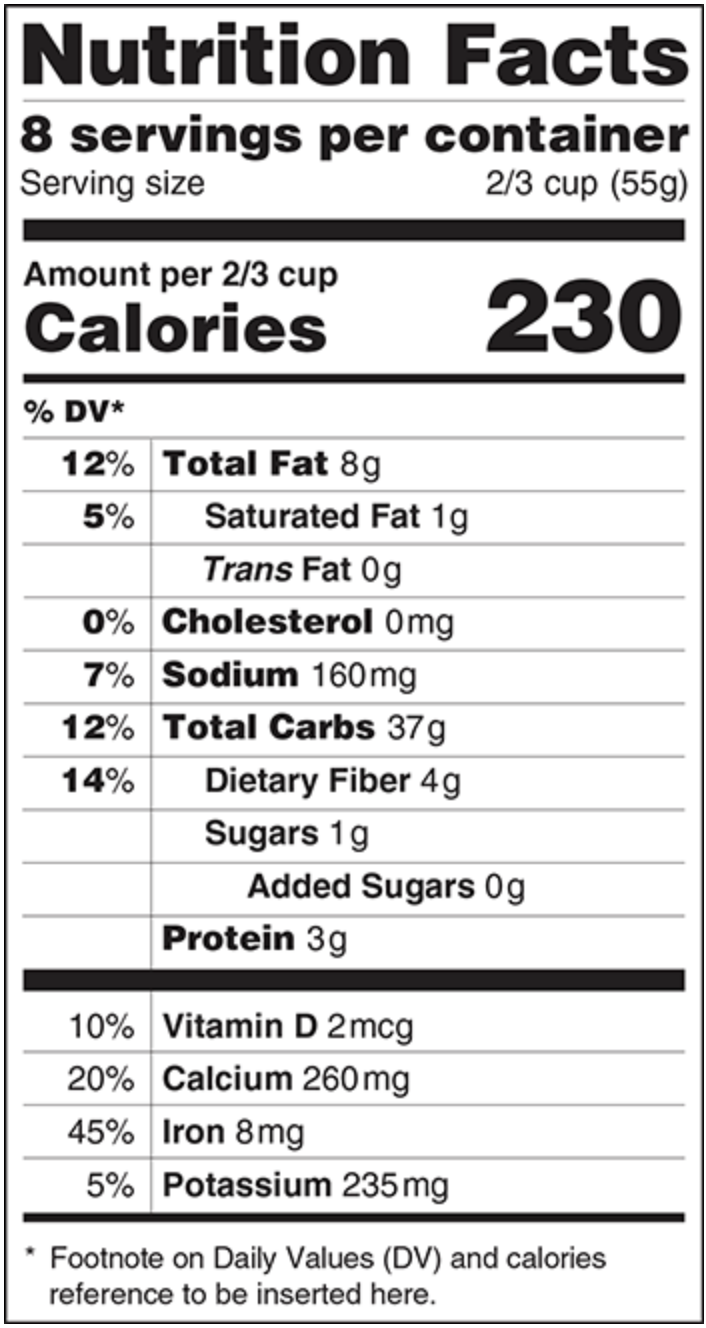
Calories and How to Count Them
CALORIES! C-A-L-O-R-I-E-S!
It’s not that scary of a word. Yet, within the realm of health and fitness this little three-syllable word can lead to a display of nothing but pure horror.
But calories really aren’t that big of a deal. In fact, they’re easy to describe, easy to find, easy to count and thus, easy to manage.
What is a Calorie?
Well, google it… don’t worry, we did it for you:
‘A single Calorie is the energy needed to raise the temperature of 1 kilogram of water by 1 °C, often used to measure the energy value of foods.’
So, basically, a Calorie (which can also be referred to as a large calorie, kcal, Cal, or food calorie) is heat energy. Energy – that’s it! Calories are energy! We love exclamation marks!
We all need energy. Whether it’s for walking, running, chewing, dancing, or picking up your favorite duck at the local pond, we need energy to do almost everything! Even to keep our bodies functioning while we sleep requires energy.
In fact, there is something called a Basal Metabolic Rate (BMR). This is the amount of Calories that you burn just by doing the tasks necessary in keeping your body alive. Tasks such as regulating body temperature, removing waste products, digesting food, circulating blood, oh, and breathing. If you’re curious about what your personal BMR is, you can get a good idea using this BMR calculator.
There are factors to consider that do affect your BMR. Factors like age, gender, body fat percentage, and heredity.
My personal BMR is 1,875 Calories (the person writing this article). Therefore, to merely stay afloat on this lake called life, I need to consume just under 1,900 Calories per day. But obviously, I need much more than that due to my other activities that include walking, running, chewing, dancing, playing with ducks, and occasionally working out like a mad man.
Which brings us to another little important abbreviation: ‘TDEE’.
TDEE stands for ‘Total Daily Energy Expenditure’. Yes, you breathe, you regulate body temperature (which both count towards your BMR), but combining that with your active lifestyle which includes running and climbing into bed (and everything in between), you end up with the total amount of Calories needed to keep you going throughout the day; your TDEE.
Your TDEE is everything you need! By learning your TDEE amount you’ll have a good idea of how many Calories you need to cover everything that you do in a single day.
But how can you find your TDEE? Well, we’ve prepared a table to help you ascertain an estimate of your TDEE. Though this won’t be 100% accurate, it will give you a good, general starting idea. Simply choose the activity level that best describes you and follow the formula:
| Amount of Daily Activity | Description | Formula |
| Sedentary | Little or no exercises. You work in a seated position for most of the day and take the elevator to the first floor. | TDEE = BMR x 1.2 |
| Lightly Active | Light exercise 1 – 3 times a week. Some of your exercise time is spent on Facebook. | TDEE = BMR x 1.375 |
| Moderately Active | Moderate exercise 3 – 5 days a week. You like the couch, but when you exercise, you really work it! | TDEE = BMR x 1.55 |
| Very Active | Hard exercise 6 – 7 days a week. You’re a machine and everyone should be proud of you. | TDEE = BMR x 1.725 |
| Athlete Active | Hard exercise 6 – 7 days a week, sometimes twice per day. Why are you not in the Olympics? | TDEE = BMR x 1.9 |
For example:
My personal BMR is 1,875
My activity level is ‘Very Active’
1,875 x 1.725 = 3,234
So! To maintain my current weight of 202lbs, I need to consume roughly 3,234 Calories per day.
Now that we know how many we need, how can we count them? They’re not the size of cornflakes, so it can seem a little intimidating locating them and calculating them. Luckily, most food products sold with a package larger than 100cm squared are required by law to display a nutrition information label. It is here that you can find the average amount of Calories in one serving of any product. It will look something like this:

If the product says that one serving contains ‘x’ amount of Calories, eat a ‘recommended serving’, or two… and then log the amount of Calories consumed in your bright new Calorie-counting book. At the end of the day, add them up, compare them with your TDEE, and take it from there. Or, use one of the many fantastic Calorie-counting apps available for free. MyFitnessPal is a great example.
Question: But how can I gain/lose/maintain weight?
Answer: (We’re going to put this as simply as possible)
IF YOU CONSUME MORE DAILY CALORIES THAN YOUR PERSONAL TDEE, YOU WILL GAIN WEIGHT.
IF YOU CONSUME FEWER DAILY CALORIES THAN YOUR PERSONAL TDEE, YOU WILL LOSE WEIGHT.
IF YOU CONSUME THE SAME AMOUNT OF DAILY CALORIES AS YOUR TDEE, YOU WILL MAINTAIN YOUR CURRENT WEIGHT.
This is known as Calories in (food) and Calories out (TDEE).
Looking to lose weight? Weigh yourself one morning before consuming anything. Then, try to eat 100 – 300 fewer Calories than normal every day for a week or two. Then, wake up and weigh yourself again
Can you see results?
Yes? GREAT! Keep going!
No? Reduce your calories by a further 100 a day until those results begin to show… (We wouldn’t ever recommend dropping below 1,200 Calories per day).
No food label? No problem! Many Calorie-counting apps out there actually give you full estimates of mysterious labeless foods (such as apples…). They even include barcode scanners to make Calorie counting even easier!
We hope this helps you a little more on the road to reaching your goals. You’re a winner and you know it.
